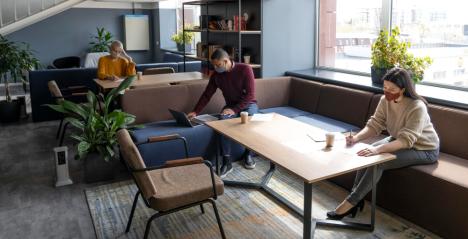Singapore is one of the most popular cities for business in the world. Its robust infrastructure, pro-business environment, and strategic location make it attractive to business owners and investors.
That said, finding a perfect office space in Singapore is daunting. Where one space might suit the size of your operations, the other might be within your target market. Then, where one might fit your budget, the other might offer more amenities at a higher price. Clearly, there are many considerations.
In this guide, we’ve boiled it down to four factors which, if you consider thoroughly, will guarantee you land a perfect place of business for yourself.
1. Office Size and Scalability
Kick off your search by analysing the office size you’re looking for, keeping in mind your plans to scale your operations soon. Consider everything from your team size to current operational requirements (such as meeting rooms, mailrooms, receptions, kitchenettes, and private offices) to the required room for expansion.
For smaller companies (2-10 employees), shared offices (such as co-working spaces) work best. They provide all amenities at low monthly costs, with lower or no upfront security deposits. They are also flexible for scaling, as you can increase or decrease the seats you pay for depending on your team size.
However, private offices make more sense for larger, more established businesses (teams of 11–50 employees or above). They provide privacy and facilitate productivity, helping you create a more collaborative workspace. Additionally, they help build a brand image of permanence and stability for businesses before their clients and employees.
The only problem with larger offices is scalability—grow the team size, and the cost per employee goes down. Downsize, and the cost goes up.
Assess your current business needs and anticipate whether you will need to upsize or downsize soon. Then, based on this analysis, select the appropriate office type.
2. Location Accessibility
Finding an office with a size and infrastructure that suits your business isn’t a big problem. The real challenge is ensuring that the office is accessible—in other words, a location that’s easy for your clients, employees and partners to approach through highways and public transport.
Location accessibility has various benefits. Client and employee satisfaction ratings go up, allowing you to retain both for longer. Similarly, their experience working with you will also improve, making your business a favourable place to work and to do business with.
If you want to up the game, also evaluate the availability of nearby facilities and entertainment centres such as restaurants, cafes, gyms, and childcare centres. This will give your employees an enjoyable work-life balance and make it easy for you to host your clients.
Raffles Place, Marina Bay, Tanjong Pagar, Orchard Road, and Jurong East are some of the most accessible locations in Singapore—with many facilities nearby. However, their accessibility also makes them expensive in the same order—Raffles Place being the most costly and Jurong East being the most affordable (as long as we keep accessibility in mind).
3. Costs and Overheads
Offices are essential, but they add a lot to business expenses. Apart from the rent, you must also pay for utilities, furniture, amenities, maintenance, and employee travel. As such, it’s not possible to decide which office and location are best for you without considering these costs.
The trick here is to think of the final figure your business can bear for the office and then figure out your budget for the office. You'll find the sweet spot for yourself once you’ve allocated concrete amounts to all associated costs. The best part? You could avoid unpredictable increases in business overheads when you finally move into the new space.
As mentioned earlier, areas in Singapore such as Raffles Place and Marina Bay, though highly accessible, can be expensive for businesses. While the suburbs are cheaper, they may be less accessible.
Also, while budgeting, you may realise that upfront costs such as office setup (furniture and amenities) and rental security deposits take up most of the space. A cheat code to avoid such costs is to go for a serviced office like those provided by Compass Offices that meet your various requirements.
4. Business Environment
Location accessibility with complimentary facilities is one thing. The other is the complementary business environment. You can either pick a location that’s considered a “hub” for similar businesses, or a location closer to your suppliers, clients, and service providers.
Locations like Raffles Place and Marina Bay are hubs for financial institutions and multinational corporations. When these businesses operate in close proximity, they benefit from each other’s credibility and create more networking opportunities. Such a professional atmosphere is ideal for client meetings and corporate events.
On the other hand, being near suppliers, clients, and service providers helps streamline operations and reduce costs, especially in the finance and technology sectors. Examples of such areas are Tanjong Pagar and Orchard Road, both of which offer a mix of established businesses and startups, providing a vibrant ecosystem for growth.
It’s for you to decide what’s more important for your business: To establish itself in a business hub or an operation-focused environment, away from the crowd. Both approaches have their benefits—and both come at different costs.












